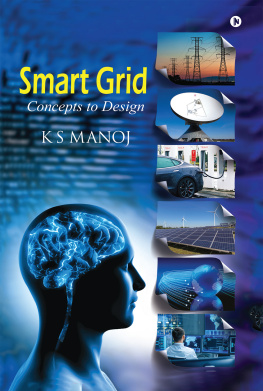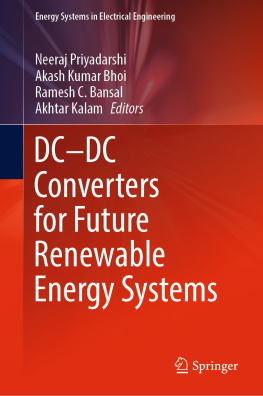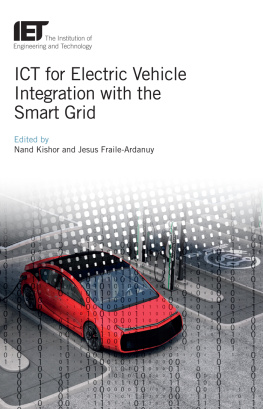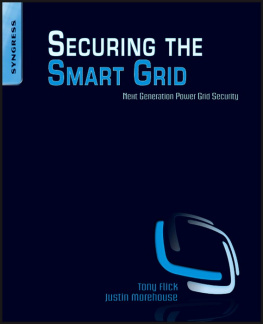Copyright
Academic Press is an imprint of Elsevier
125 London Wall, London EC2Y 5AS, United Kingdom
525 B Street, Suite 1650, San Diego, CA 92101, United States
50 Hampshire Street, 5th Floor, Cambridge, MA 02139, United States
The Boulevard, Langford Lane, Kidlington, Oxford OX5 1GB, United Kingdom
Copyright 2023 Elsevier Inc. All rights reserved.
No part of this publication may be reproduced or transmitted in any form or by any means, electronic or mechanical, including photocopying, recording, or any information storage and retrieval system, without permission in writing from the publisher. Details on how to seek permission, further information about the Publishers permissions policies and our arrangements with organizations such as the Copyright Clearance Center and the Copyright Licensing Agency, can be found at our website: www.elsevier.com/permissions.
This book and the individual contributions contained in it are protected under copyright by the Publisher (other than as may be noted herein).
Notices
Knowledge and best practice in this field are constantly changing. As new research and experience broaden our understanding, changes in research methods, professional practices, or medical treatment may become necessary.
Practitioners and researchers must always rely on their own experience and knowledge in evaluating and using any information, methods, compounds, or experiments described herein. In using such information or methods they should be mindful of their own safety and the safety of others, including parties for whom they have a professional responsibility.
To the fullest extent of the law, neither the Publisher nor the authors, contributors, or editors, assume any liability for any injury and/or damage to persons or property as a matter of products liability, negligence or otherwise, or from any use or operation of any methods, products, instructions, or ideas contained in the material herein.
ISBN 978-0-323-99560-3
For information on all Academic Press publications visit our website at https://www.elsevier.com/books-and-journals

Publisher: Joseph P. Hayton
Acquisitions Editor: Rachel E. Pomery
Editorial Project Manager: Ali Afzal-Khan
Production Project Manager: Prem Kumar Kaliamoorthi
Cover Designer: Matthew Limbert
Typeset by STRAIVE, India
Dedication
To my parents Muhammad Ramzan (Late) and Naziran BiBi, my brother Muhammad Imran, and my sisters for their support and love.
To my beloved wife Badar Un Nisa and my son M. Sarim Kamran for their inspiration, support, and love.
Preface
Conventional grids throughout the world are being changed by the inventions of various technologies. With the increased maturity of renewable energy technologies, the distributed generation concept has evolved as a readily available source of energy for the areas where the sources are abundantly available. These distributed generation technologies need to be integrated into the existing grid. To record the transactions of electricity between these microgrids and the main grid, a communication network and an advanced metering infrastructure are required. These concepts are merged in the smart grid.
The smart grid is not a limited field that confines itself to limited concepts. It is a vast field integrating smart metering, communication technologies, renewable energy sources, power grids, forecasting techniques, power electronics, thermodynamics, electric vehicles, and energy storage systems. The smart grid will support the improvement of energy efficiency and the utilization of renewable energy sources. The energy management system integrated into the smart grid will optimize energy sources and harnessing techniques. This book gives an insight into all the above-stated fields of the smart grid with its associated key features. It also describes the key enabling technologies and thus permits the reader to engage with the immediate development of the power system and take part in the debate over the future of the smart grid.
concludes by discussing the current global status of the smart grid. The technical contents of the book include specialized topics that will appeal to engineers from various disciplines looking to enhance their knowledge of technologies that are making an increasing contribution to the realization of the smart grid.
Muhammad Kamran, Riphah International University, Islamabad, Pakistan
Acknowledgments
I would like to acknowledge my colleagues and individuals without whom this project would not have succeeded. Particular thanks are due to Mr. Muhammad Arshad Rasheed (Research Associate, Department of Electrical Engineering and Technology, Riphah International University, Faisalabad Campus, Pakistan), who helped me in the simulation of a grid-connected solar PV system in the microgrid. I would also like to acknowledge Muhammad Zunair Zamir (Lecturer, Department of Electrical Engineering and Technology, Riphah International University, Faisalabad Campus, Pakistan) for reviewing some of the chapters of this book.
List of abbreviations
AC alternating current
ACSR aluminum conductor steel reinforced
AE autoencoder
AMI advanced metering infrastructure
ANSI American National Standards Institute
ARIMA autoregressive integrated moving average
ARMA autoregressive moving average
BAN building area network
BB-PLC broadband-programmable logic controller
BEV battery electric vehicle
BDC bottom dead center
BNN Bayesian neural network
BoS balance of system
BPNN back-propagation neural network
CAE convolutional autoencoder
CAES compressed air energy storage
CB circuit breaker
CE Coulomb efficiency
CF capacity factor
CGT combustion gas turbine
CHP combined heat and power
CNN convolutional neural network
COE cost of energy
DC direct current
DES data encryption standard
DFIG doubly fed induction generator
DG distributed generation
DIAC diode for alternating current
DMFC direct methanol fuel cell
DNN deep neural network
DOD depth of discharge
DoS denial of the service
DR demand response
EM energy management system
EMF electromotive force
ESS energy storage system
EV electric vehicle
FC flying capacitor
FC fuel cell
FCEV fuel cell electric vehicle
FES flywheel energy storage
FFNN feedforward neural network
FiT feed-in tariff
FLC fuzzy logic control
FL fuzzy logic
GHG greenhouse gas
GPRS general packet for radio service
GSM global system for mobile communication
GTO gate turn-off
HAN home area network
HAWT horizontal axis wind turbine
HEMS home energy management system
HES hybrid energy system(s)
HEV hybrid electric vehicle
HOMER hybrid optimization model for electric renewables
HRSG heat recovery steam generator
IAN industry area network
ICE internal combustion engine
ICT information and communication technologies
IEA International Energy Agency
IEC International Electrotechnical Commission
IEEE Institute of Electrical and Electronics Engineering
IG induction generator










